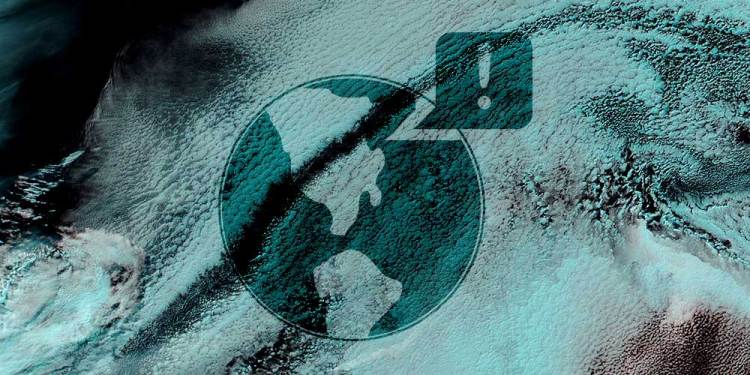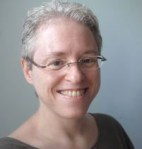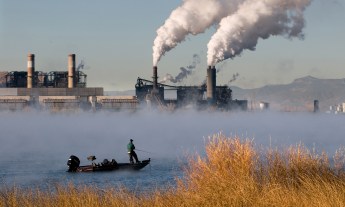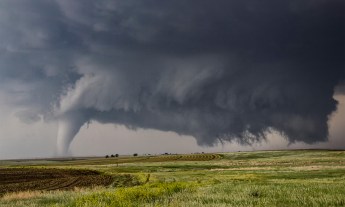
It can be easy to feel hopeless when it comes to the global climate. Meet three leaders who are actually making a difference.
What does “making a real difference about climate change” mean, when clearly everything we’ve done so far hasn’t been enough? Carbon dioxide in the atmosphere is 400 parts per million and rising. The Arctic ice cap hit its fifth lowest extent on record last winter. We’ve witnessed so many weather extremes in the past 12 months that we’ve run out of adjectives to describe them: from record-setting droughts in Brazil, California and Australia, to record-setting floods in Colorado, the United Kingdom, and Central Europe, to a record-setting typhoon in the Philippines. Globally, 13 of the past 14 years have been record-setting hot.
In short: Things could be a lot better. But don’t ditch optimism altogether. In fact, several American leaders in atmospheric science, clean energy, and community activism are not dwelling on past political failures or old cultural wars. Instead, they’re learning from them how to be more effective in the present. They’re opening minds and proving that there is still a lot we can do, if not to end climate change, then to make a tangible difference in how we’ll live with it from now on.

On September 13, 2012, an enormous underwater turbine in Maine’s Cobscook Bay — resembling a 98-foot-long, 17-foot-high, 17-foot-wide, push-powered lawn mower and weighing 80,000 pounds — began sending power inland to the Bangor Hydro electrical utility grid.
It was a historic moment for clean power: the first commercial-scale, grid-connected tidal energy generator anywhere in the Americas.
The principle of a tidal energy generator is the same as that of a wind turbine; but unlike the winds, tides and currents are predictable and consistent. But the Ocean Renewable Power Company (ORPC) isn’t just creating clean power in a predictable way. It’s also doing so in a way that’s environmentally sound. Two annual assessments found that, vast though it is, the turbine has had “no known adverse impacts” on Cobscook Bay’s aquaculture industry, its resident bald eagles, marine life, or sediment transportation. The turbine didn’t even make enough noise to rise above the ambient level.
That’s made ORPC a leader in pushing tidal energy toward commercial viability — and it’s attracting attention from sources that matter. The U.S. Department of Energy funded $10 million of the Cobscook Bay project’s initial $21 million budget and has given ORPC a $5 million grant to work on version 2.0 of the turbine. Fast Company recently named the company one of the world’s most innovative energy firms.
The firm still needs others to buy into its vision. “When we have no energy policy in the U.S., investors have no idea where we’re headed,” says ORPC president and CEO Chris Sauer. Between that, the financial meltdown of 2008, and the current low price of natural gas, he says, “there are no early-stage investors in the green space anymore, no venture money, no bank money.”
For now, the team is working on improving the turbine design — and developing a companion version that can be powered by rivers. That one will be piloted in Alaska this summer, before heading for testing in southern Chile.

Texas Tech political science professor Katharine Hayhoe may be the most important climate communicator in the U.S. As both a leading atmospheric scientist and an evangelical Christian, Hayhoe speaks sincerely about caring for the Earth as God’s creation. She takes a detour around the politics of polarization, opening minds other climate advocates might have given up on.
In her view, global warming and extreme weather are not God’s will, but the results of humanity’s God-given capacity for choice — in this case, choosing to continue pumping too much greenhouse pollution into the atmosphere. That also gives humanity the capacity to make better choices, to try and fix what it has broken.
Hayhoe especially likes to speak with conservative groups that generally wouldn’t be interested in hearing from a scientist about climate change. At such presentations, she says, most people quickly lose interest in challenging the science, and focus instead on learning what they can do about climate change within their own value systems.
For years, Hayhoe’s dual pursuits of hard climate science and conservative Christian audiences kept her under the broader cultural radar. But Showtime’s recent climate change documentary series, “Years of Living Dangerously,” has brought her mainstream. In the series’ first hour, viewers see Hayhoe explain climate science to a largely accepting evangelical church group — and to actor/viewer surrogate Don Cheadle. Cheadle, in turn, described Hayhoe as “a smart person who defies stereotype” for Time, which selected her as one of the world’s 100 most influential people.
Her day job at Texas Tech includes directing a regional climate research center studying how human-propelled climate shifts are changing weather patterns in the southern central U.S. — and how those changes will affect local water supplies, infrastructure, agriculture, and more. “While climate change is a global problem, the impacts are experienced at the regional scale,” she says. “If I’m a cotton farmer here in West Texas, I want to know what’s going to happen to my crop. I don’t care if you tell me what’s going to happen to the global cotton crop; I want to know if I’m a winner or a loser.”

Polls and pundits frequently assure us that the American public does not care much about climate change. But a grassroots political movement underway nationwide is proving otherwise.
The “Fossil Free” campaign aims to convince universities, cities, foundations, and other large investors to drop coal, oil, and natural gas from their stock portfolios. “The idea is that if it’s wrong to destroy the climate, it’s wrong to profit from the wreckage,” says Jenny Marienau of 350.org, the U.S.-based organization that has spearheaded the campaign.
It’s the fastest-growing divestment movement in history — and it’s gaining particular traction on university campuses. “The apartheid divestment campaign was run on campuses for a period of about 15-20 years,” Marienau says. “In that time they had about 450 campuses divest.” By comparison, since 2012, fossil fuel divestment campaigns have already begun at 400 campuses, says Marienau, and 12 schools have committed to divest, representing endowments of over $288.7 billion. The movement’s latest victory is a big one: Stanford University agreed to drop coal mining investments from its $18.7 billion endowment, one of the world’s largest.
Noah Burchard, a sophomore at Dickinson College in Pennsylvania, has been working to get fossil fuels out of his school’s $380 million endowment since late 2012, when he and friends heard 350 founder Bill McKibben speak in Philadelphia. He and fellow students will need to keep up the pressure as Dickinson awaits the report from its “sustainability investments task force” of students, professors, staff, and trustees, convened to research divestment.
The campaign is fascinating in its flexibility, with students tailoring the “fossil free” message to galvanize support around local concerns. For instance, students at Washington University in St. Louis are working to loosen the school’s close ties with Peabody Energy, the world’s largest private-sector coal company and a neighbor in St. Louis.
“Corporate interests hold a lot more power and voice over our university, what it researches, than the students themselves,” says senior Rachel Goldstein, who’s studying environmental biology and engineering and is passionate about the fossil fuel divestment campaign. “In the U.S., we’re not moving forward on climate change because energy companies hold so much power.”
 Emily Gertz is a journalist covering environment, science, and technology. Her work has appeared in publications such as Popular Science, Rolling Stone and Scientific American. She is also the co-author of two Maker Media books on DIY environmental monitoring.
Emily Gertz is a journalist covering environment, science, and technology. Her work has appeared in publications such as Popular Science, Rolling Stone and Scientific American. She is also the co-author of two Maker Media books on DIY environmental monitoring.













